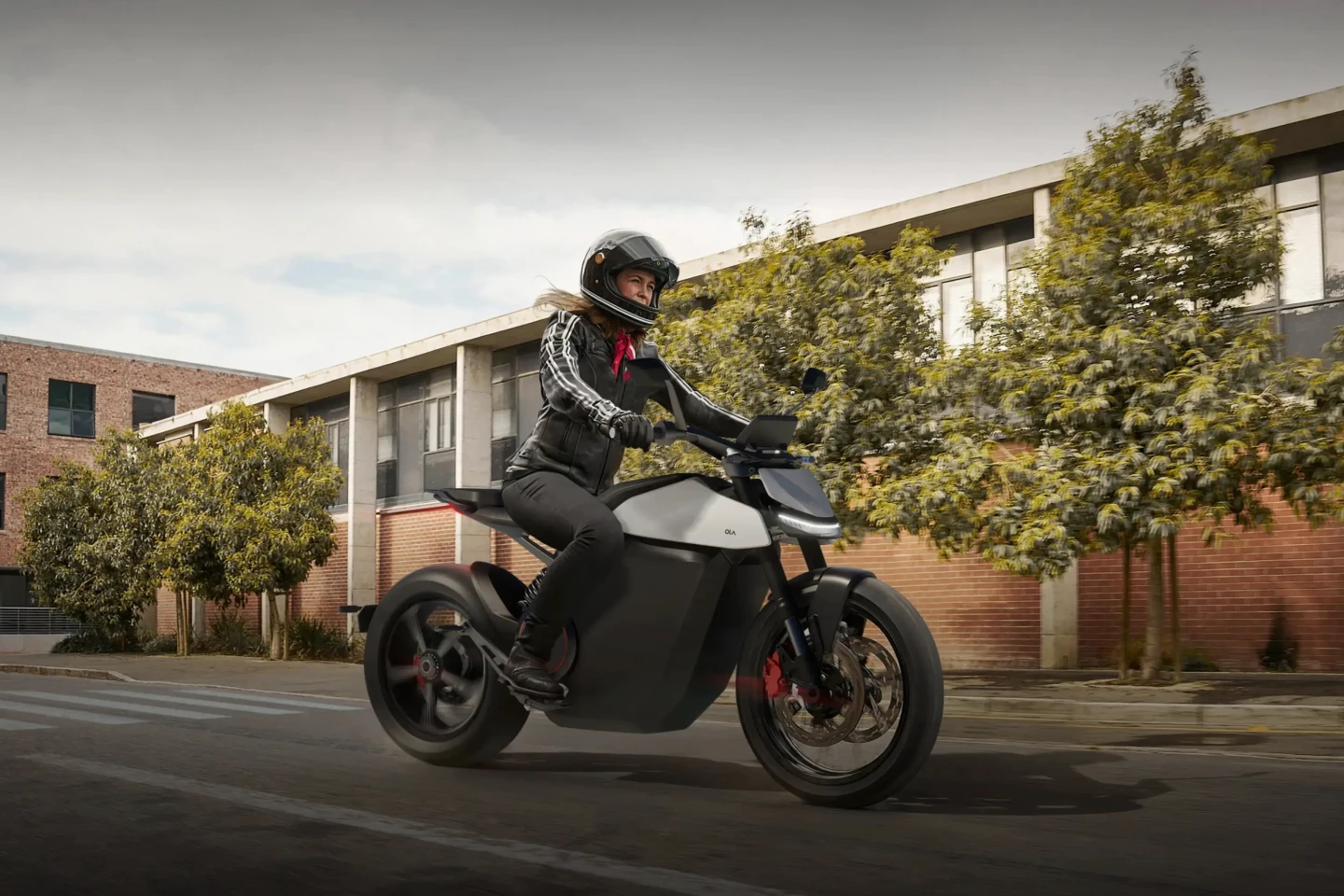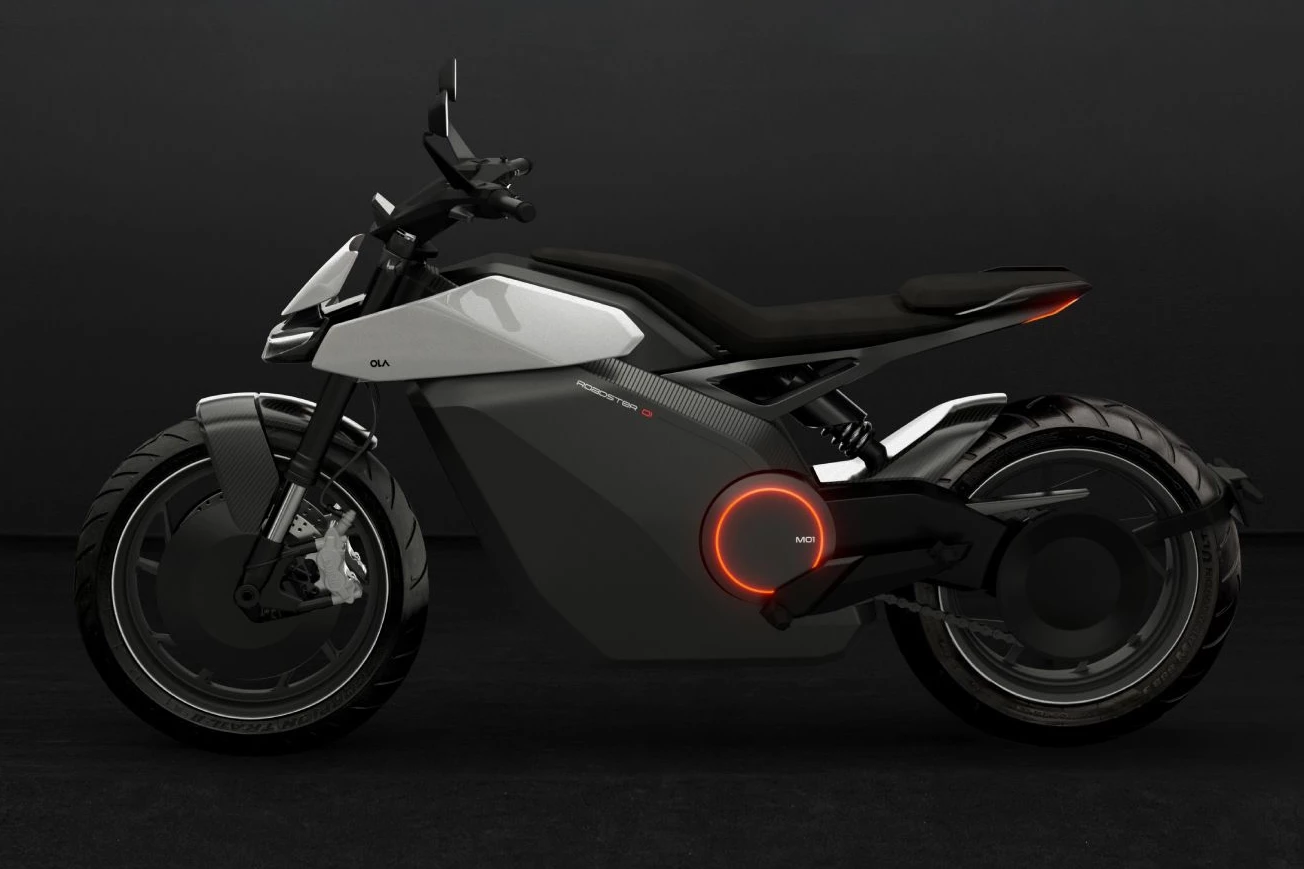Ola's super-cheap electric roadsters caused a global stir at launch, but issues are now becoming apparent, from the subpar base variant lacking basic safety equipment, to an embarrassing case of outright plagiarism of Zero Motorcycles’ press photos.
The age of electric mobility is upon us.
In times when new launches are happening every month, not every release gathers the same amount of attention and anticipation among global audiences. One manufacturer that definitely did create some serious hype was India’s Ola Electric. The company that started as a cab aggregator quickly went hard into the mobility space with a series of super-affordable, high-tech electric scooters and a giga-scale "Futurefactory" capable of producing a bike every two seconds.
These practical little things were mainly relevant to the local market – but the world definitely took notice when Ola launched the first of its proposed four full-sized electric bikes, the Roadster, this past month.

Lauded globally for offering impressive performance metrics at a bargain price – 120-mph (200-km/h) top speeds at less than US$3,000 for the top model – hopes were high thanks to Ola's neat-looking renders of the motorcycle. But Indian journos have now seen these machines in the flesh, and the contrast between marketing and reality looks pretty stark.
The motorcycle manufacturer recently showcased its entire Roadster lineup, which comprises the entry-level X variant, the standard Roadster, and the top-of-the-line Pro trim. While all of these models are available for preorder, and Ola's website shows delivery dates for each of them, the Roadster Pro’s deliveries aren't slated to begin until September 2026, more than two years after its launch – and Indian dealers are only committing to base variant deliveries at the moment.
Much of the hype surrounding the Ola Roadster was centered on its features-to-price ratio. While the base variant is priced at 74,999 Indian rupees (which translates to an unbelievable US$890), it's now clear it's not the fancy, feature-laden offering most people thought it would be.
The Roadster X gets a drum brake at the rear, and there is no ABS on offer. It gets an LCD console (the same thing that comes on the S1 scooter) rather than the much-advertised full-color TFT panel, which seems to be saved for the more expensive variants. It gets what the brand terms "standard forks" at the front and twin shock absorbers at the back – a setup that simply seems inadequate to take on the tough riding conditions that India is known for.
Also missing are an aluminum swingarm (there's a rectangular box-section swingarm instead) and diamond-cut alloys – both of which garnered a lot of attention when the initial feature list came out. While it's obvious that the company has cut down on its hardware to save costs, the harsh truth is that the Roadster X is not that much different from many other plain-Jane commuters that make up the Indian two-wheeler eco-system.
While the base model's claimed top speed of 77 mph (124 km/h) and a range of 125 miles (200 km) might have fascinated you when the bike was announced, both of these numbers only apply to the more expensive 4.5-kWh battery pack variant of the Roadster X, which is priced at 99,999 rupees (US$1,190).
The US$890 standard trim comes with a piddling 2.5-kWh battery pack that's only good for a 65-mph (105-km/h) top speed and a 72-mile (117-km) claimed range. Everyone knows real-world numbers will be lower again.
So the flashy-looking high-performance bike is years away, and the launch bike is both magnificently awkward, ugly and poorly specified.
If that was all, and this was just another disappointing case of marketing meets reality, it might be more or less business as usual. But it's not all – because Ola's marketing team has also managed to score a spectacular own-goal with the Roadster's press photos.

We’ve been referencing how enchanted global audiences were by Ola’s promises when it first revealed the Roadster. A huge credit for that has to go to the product teasers that the brand created – or stole from an American competitor, as it now appears.

It didn't take long for the Internet to notice some distinct similarities between Ola's press photos and earlier shots published by California's Zero Motorcycles – and when placed side by side, it's absolutely undeniable.
Social media posts from a number of Indian automotive enthusiasts rapidly went viral, sparking debates not just about Ola's morals and business ethics, but about exactly how stupid a marketing team would have to be to nakedly steal copyright images from a competitor, paste their own motorcycle renders in, and then publish them on the internet.
It beggars belief that anyone would think they could get away with this kind of thing in 2024.

“How sad," writes Abrar Bin Ayub, Product Manager at Hero Tech Center Germany for Vida World. "Folks at Ola Electric completely ripped off the work of Zero Motorcycles Inc. Beyond legal, how does one’s conscience allow this? Does the culture empower or force one to? Would really like to see accountability for this Bhavish Aggarwal.”
We're hearing rumors that Ola didn't allow any media house to get very close to the bikes on the day of the launch, so not a lot of people could really get a good look. We're hearing other rumors that the top-of-the-line Roadster Pro was pushed onto the stage instead of being ridden. This clearly suggests that the bikes are far from being production-ready, and the brand did everything possible to hold its cards close to its chest.
So before the very first of Ola's electric motorcycles has even rolled off the showroom floor, the picture's not looking great. And while we're talking about the showroom, India's Economic Times recently reported on a furious customer who set an Ola store on fire after voicing problems with their scooter purchased a mere 20 days earlier. This further brings to light one of the biggest issues the company has had: its after-sales service.
In India, Ola is consistently criticized for its products and below-par service offerings. Its electric scooters are the subject of an array of complaints on various online platforms, with several consumers voicing grave concerns regarding both the product and service quality. These grievances include malfunctioning software, subpar service quality, and inadequate company response.
None of this is good news for either Ola or those who were initially impressed by what the brand teased in the form of its upcoming motorcycles. Time will tell how the Indian manufacturer will come out of this fiasco, but one thing's for sure. The Ola Roadster looked like a breakout motorcycle in the EV space just a month ago, but now it's rolling out looking, smelling and quacking like a dumpster fire.
Sources: ZigWheels, RushLane, Ola Electric







